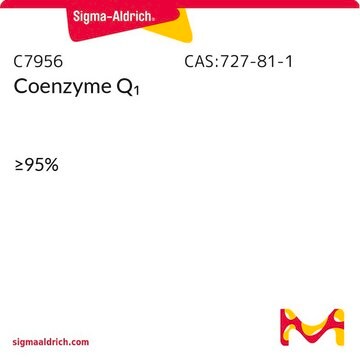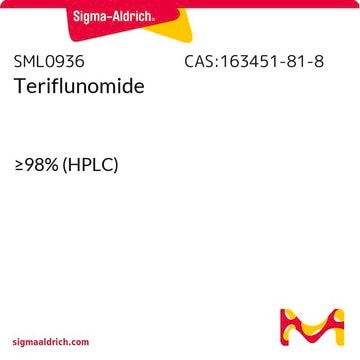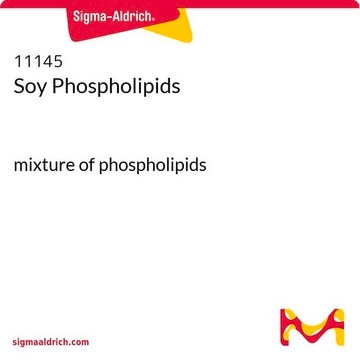D7911
Decylubiquinone
≥97% (HPLC)
Synonym(s):
2,3-Dimethoxy-5-methyl-6-decyl-1,4-benzoquinone
About This Item
Recommended Products
assay
≥97% (HPLC)
form
liquid
storage temp.
−20°C
SMILES string
CCCCCCCCCCC1=C(C)C(=O)C(OC)=C(OC)C1=O
InChI
1S/C19H30O4/c1-5-6-7-8-9-10-11-12-13-15-14(2)16(20)18(22-3)19(23-4)17(15)21/h5-13H2,1-4H3
InChI key
VMEGFMNVSYVVOM-UHFFFAOYSA-N
General description
application
- Lysosomal Ca(2+) as a mediator of palmitate-induced lipotoxicity.: This study explores the role of decylubiquinone in modulating lysosomal Ca(2+) levels, providing insights into mechanisms of lipotoxicity and potential therapeutic applications in metabolic diseases (Oh et al., 2023).
- Quinone binding site in a type VI sulfide:quinone oxidoreductase.: This paper investigates the binding dynamics of decylubiquinone in sulfide:quinone oxidoreductase, shedding light on its role in microbial respiration and potential biotechnological applications (Miklovics et al., 2022).
- Protective role of Decylubiquinone against secondary melanoma at lung in B16F10 induced mice.: The study demonstrates the anti-metastatic properties of decylubiquinone in a melanoma mouse model, highlighting its potential as a therapeutic agent in cancer treatment (Chatterjee et al., 2023).
- Decylubiquinone Inhibits Colorectal Cancer Growth Through Upregulating Sirtuin2.: This research identifies decylubiquinone as an inhibitor of colorectal cancer growth by modulating Sirtuin2 expression, suggesting its application in cancer therapeutics (Li et al., 2021).
Storage Class
10 - Combustible liquids
wgk_germany
WGK 3
flash_point_f
Not applicable
flash_point_c
Not applicable
ppe
Eyeshields, Gloves, type ABEK (EN14387) respirator filter
Certificates of Analysis (COA)
Search for Certificates of Analysis (COA) by entering the products Lot/Batch Number. Lot and Batch Numbers can be found on a product’s label following the words ‘Lot’ or ‘Batch’.
Already Own This Product?
Find documentation for the products that you have recently purchased in the Document Library.
Customers Also Viewed
Our team of scientists has experience in all areas of research including Life Science, Material Science, Chemical Synthesis, Chromatography, Analytical and many others.
Contact Technical Service










